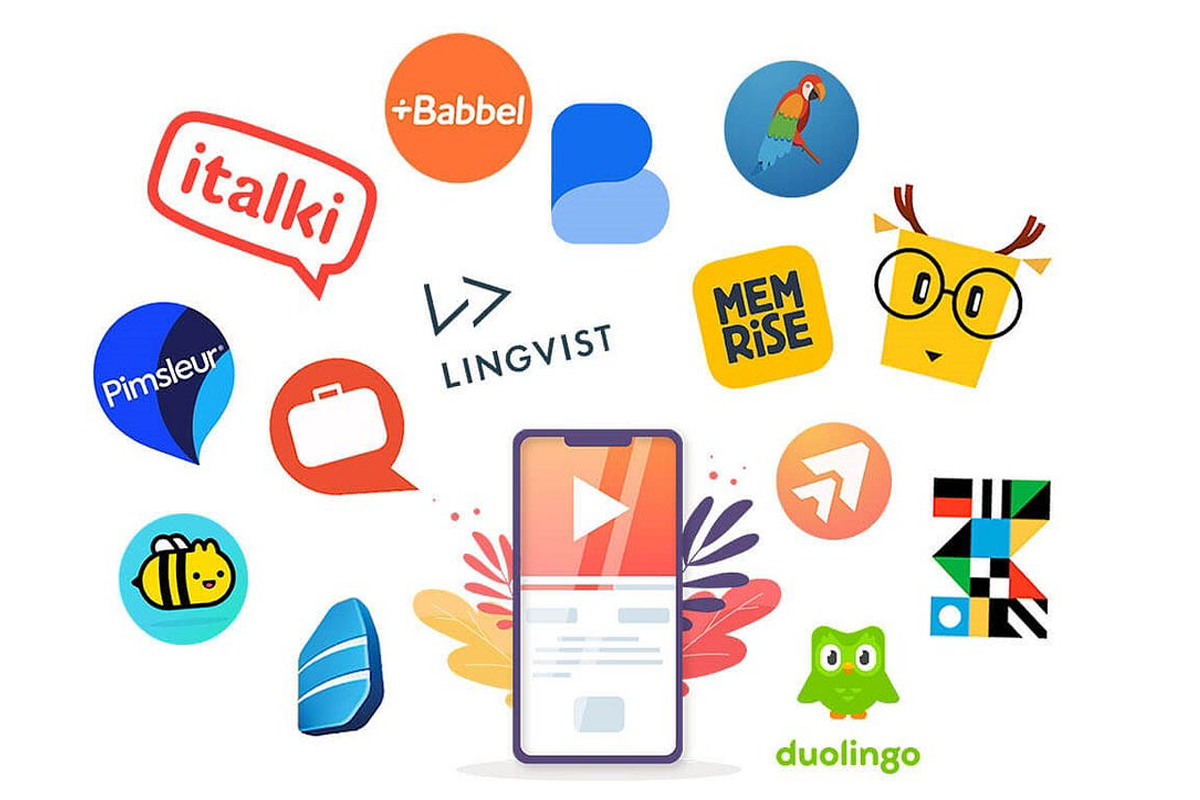Learning a foreign language has always been seen as a gateway to opportunity, travel, and cultural discovery. In today’s globalised world, it’s no longer just a hobby; it’s a competitive advantage. Employers value multilingualism, friendships are forged across borders, and travel becomes richer when you can speak even a few words of the local tongue.
The good news is that you don’t need to sit in a classroom anymore to learn. From AI-powered apps to immersive online exchanges, the digital world has opened new pathways to fluency. But the big question remains: can you really learn a language online — and do it efficiently?
The answer is yes — but with caveats. Online tools are powerful, but efficiency depends on how you use them, which apps you choose, the habits you build, and whether you supplement them with cultural immersion. This article explores the best tools, tips, and strategies for online language learning, along with advice on which languages are worth investing your time in.
Why Online Language Learning Works
Traditionally, language learning involved textbooks, classrooms, and long vocabulary lists. While effective, this approach was often slow and uninspiring. Online learning changes the game in several ways:
- Accessibility: Anyone with a smartphone or computer can access lessons anytime, anywhere.
- Affordability: Many platforms are free or low-cost compared to in-person classes.
- Personalisation: AI-powered systems adapt to your pace, strengths, and weaknesses.
- Engagement: Gamified learning keeps you motivated through streaks, rewards, and interactive exercises.
- Community: Online learners can instantly connect with native speakers across the globe.
In short, the efficiency comes from combining flexibility, smart technology, and real-world practice.
The Best Apps for Online Language Learning
There are hundreds of apps and tools, but a few stand out as leaders in efficiency and effectiveness:
Duolingo
- Famous for gamification — short daily lessons feel like a game.
- Great for beginners who need a low-pressure entry point.
- Covers dozens of languages, including niche ones like Welsh or Hawaiian.
- Limitation: Not always ideal for advanced learners, as it focuses heavily on vocabulary rather than deep grammar.
Babbel
- Structured lessons designed by linguists.
- Strong focus on conversational phrases you’ll actually use.
- Paid subscription model but more comprehensive than Duolingo for progressing beyond beginner level.
Rosetta Stone
- One of the oldest digital language platforms, now fully online.
- Uses immersion — lessons are taught in the target language from day one.
- Effective for learners who want a deep dive and don’t mind repetition.
Busuu
- Community-based learning with peer feedback from native speakers.
- Offers structured courses with grammar, vocabulary, and writing exercises.
- Available offline, great for commuters.
Pimsleur
- Audio-based learning system, perfect for developing speaking and listening skills.
- 30-minute lessons designed for daily use.
- Especially effective if you want conversational ability quickly.
HelloTalk
- A social app where you chat directly with native speakers.
- Think of it as a language exchange app with built-in translation support.
- Encourages cultural immersion alongside language practice.
Memrise
- Uses spaced repetition to help you remember vocabulary long-term.
- Includes video clips of real native speakers for listening practice.
- Good supplement to a main course app.
The Latest Tools and Gadgets to Enhance Learning
Technology isn’t limited to apps. A growing number of gadgets and platforms can turbocharge your efficiency:
- AI Tutors (ChatGPT, Speak, Elsa Speak): AI can now correct your grammar, pronunciation, and even role-play conversations.
- VR Language Immersion (Mondly VR, Immerse): Virtual reality creates simulated environments where you practice in cafes, airports, or offices.
- Smart Earbuds (Timekettle WT2, Google Pixel Buds): Real-time translation earbuds let you understand and respond in foreign languages instantly. Great for practising while travelling.
- Digital Flashcard Systems (Anki, Quizlet): Customisable flashcards with spaced repetition improve long-term recall.
- Language Podcasts (Coffee Break Languages, Language Transfer): Passive learning through listening to podcasts designed for learners.
These tools make learning more interactive and mimic real-world contexts — a major factor in efficient progress.
Tips for Efficient Online Language Learning
Having access to tools is one thing; using them efficiently is another. Here are some proven strategies:
- Set Micro Goals: Instead of saying “I want to be fluent,” aim for “I want to order coffee in Spanish in three weeks.” Small wins build momentum.
- Learn Daily: Consistency beats intensity. Fifteen minutes every day is better than two hours once a week.
- Mix Input and Output: Balance passive learning (listening, reading) with active practice (speaking, writing).
- Use Spaced Repetition: Apps like Anki or Memrise ensure you review words just before you forget them.
- Record Yourself: Listening to your voice helps identify pronunciation issues.
- Find a Language Buddy: Use apps like HelloTalk or Tandem to practice with real people.
- Immerse Digitally: Change your phone’s language settings, watch shows in your target language, and follow foreign creators on social media.
- Celebrate Mistakes: Errors are proof you’re trying. The more you practice, the faster you improve.
Which Languages Should You Learn?
Choosing the “right” language depends on your goals, but here are some considerations:
- Global Usefulness:
- Spanish: Widely spoken across Europe, the Americas, and beyond.
- French: Spoken on five continents and used in diplomacy.
- Mandarin Chinese: The most spoken language globally, crucial for business in Asia.
- Arabic: Widely spoken across the Middle East and North Africa.
- Career Value:
- German: Important in engineering, science, and EU business.
- Japanese: Tech and cultural industries.
- Portuguese: Growing importance in Brazil and Africa.
- Emerging Languages:
- Korean: Increasing influence in entertainment and tech.
- Hindi: India’s rising economic power.
- Ease of Learning for English Speakers:
- Spanish, Italian, Dutch, Norwegian: Grammatically simpler and closely related to English.
Ultimately, the best language is the one you’re motivated to stick with — passion fuels persistence.
The Value of Cultural Immersion
Language is not just about words; it’s about culture. Without understanding the context, humour, and traditions, you’ll never fully connect. Even if you’re learning online, immersion is possible:
- Media Immersion: Watch movies, listen to music, or read blogs in your target language.
- Virtual Exchanges: Join online meetups or cultural exchange groups.
- Travel (if possible): Even a short trip can fast-track your learning when you’re forced to use the language daily.
- Cooking & Lifestyle: Follow recipes, traditions, or hobbies from the culture to deepen your connection.
Immersion transforms language from a subject into a living experience.
Potential Challenges — and How to Overcome Them
Online language learning is efficient, but not without challenges:
- Motivation Drops: Apps can feel repetitive. Solution: mix methods and reward yourself.
- Lack of Speaking Practice: Many learners know vocabulary but freeze in real conversations. Solution: schedule weekly calls with native speakers.
- Over-Reliance on Apps: Apps are tools, not magic wands. Solution: integrate real-world content — TV shows, articles, music.
- Time Management: Life gets busy. Solution: anchor learning to a daily habit (study during coffee breaks or commutes).
The Verdict?: Yes, You Can Learn Online — If You’re Smart About It
So, can you learn a foreign language online and be efficient? Absolutely. In fact, today’s learners arguably have an advantage over past generations, thanks to AI tutors, VR environments, and global exchange platforms.
But efficiency comes from how you learn, not just what you use. The secret lies in combining structured apps with real-world practice, cultural immersion, and consistent daily effort.
The question is less “Can I learn online?” and more “Am I willing to show up every day, practise, and connect with the culture behind the words?”
If you do, the answer is yes — you can not only learn online but thrive, opening doors to new friendships, careers, and worlds you never imagined.




